Galleries
-

#70. Rāhula
Cave No. 17 Identification: Yazdani (IV, 1955, p. 70 f.). The legend is from the life of the Buddha.—Rāhula was born after the Buddha’s enlightenment. When the Buddha visited Kapilavastu, Rāhula was six years old and his mother wanted the Buddha to return to the worldly life. So, she made a dumpling with a sorceress’s…
-
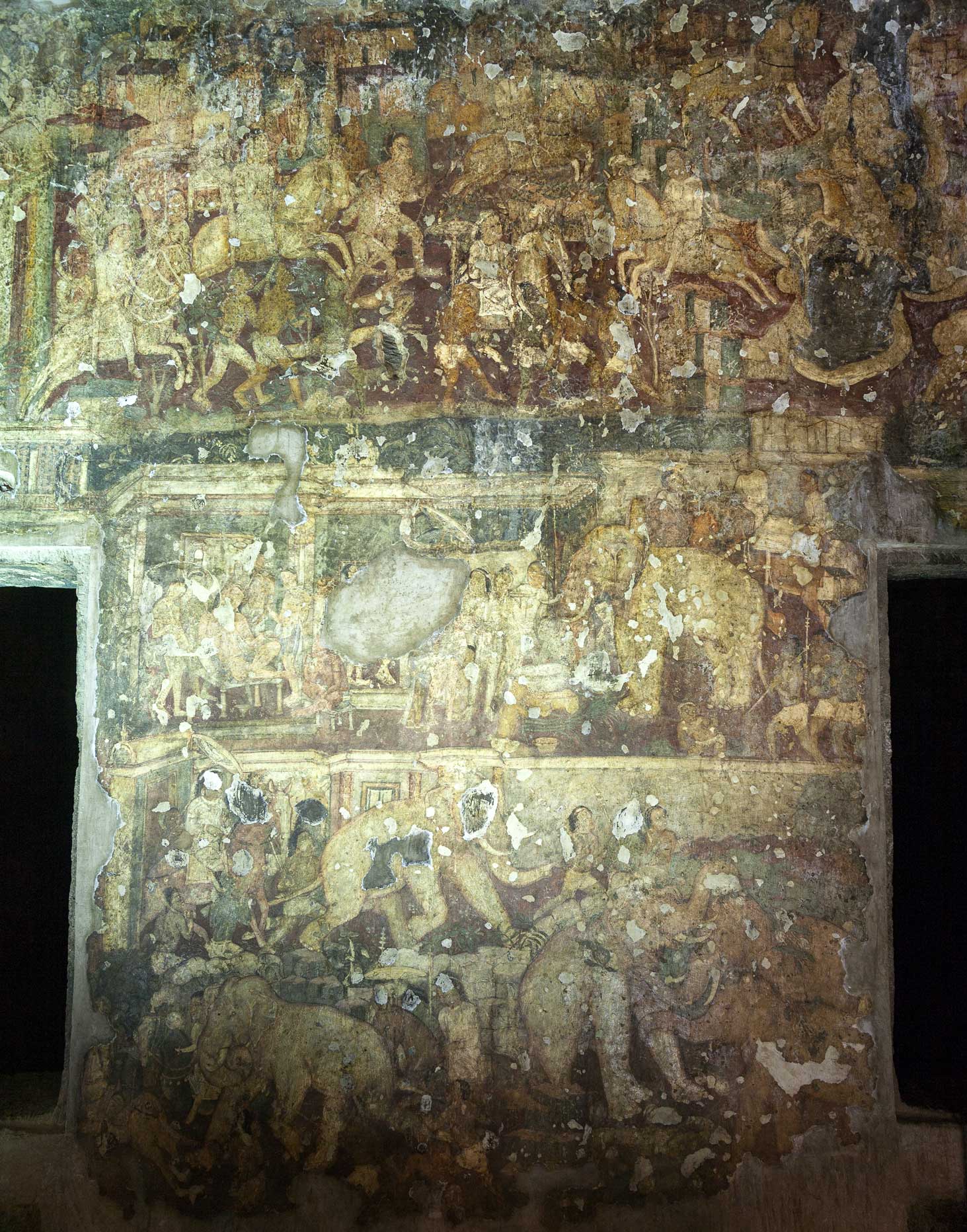
#20. Śarabha
Cave No. 17 Identification: Foucher (1921, narrative no. 14).— A śarabha or sāmbhara (ibex or a type of antelope) lived in a remote forest. He was chased by a king, who had separated from his retinue. Fearing for his life, the ibex jumped across a wide crevice. The king’s horse abruptly halted, throwing the king…
-
#15. Śaśa.
Cave No. 17 Identification: Schlingloff (1971, p. 61–67).— In a forest contoured by a rivulet lived a śaśa (hare), who had an exemplary demeanour and devout character. He always led by example. An otter, a jackal, and a monkey had a soft spot for him. One evening, the hare pointed out to them that the…
-

#27. Mātṛpoṣaka.
Cave No. 17 Identification: Oldenburg (1895, narrative no. 8).— A hunter told the king about an extraordinarily beautiful elephant he had spotted in the forest. Royal orders were issued to catch the elephant and train him. Hunters caught him and soon presented him to the king, who himself tended to the splendid-looking elephant. Surprisingly however,…
-

#11. Matsya.
Cave No. 17 Identification: Foucher (1921, narrative no. 4).— In a lotus pond, there lived a big matsya (fish), the leader of the shoals. During a particularly hot summer, the pond started drying up and shrinking in size. As a result, the fish became easy prey for crows and other birds. In utter distress, the…
-
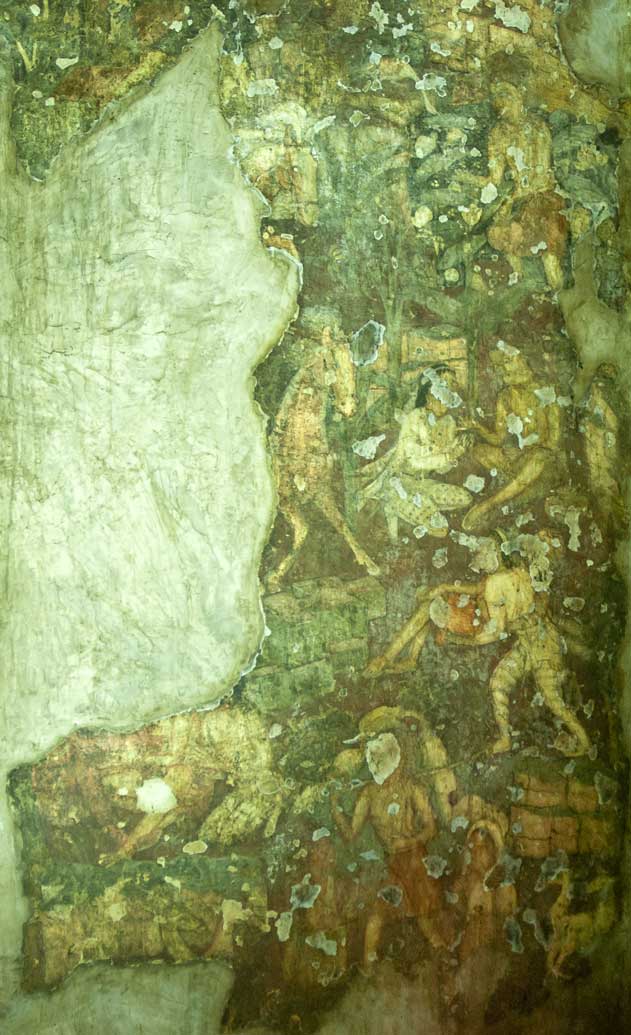
#32. Śyāma
Cave No. 17 Identification: Oldenburg (1895, narrative no. 9).— Śyāma was the court priest’s devoted son. As the priest and his wife grew old and blind, he asked the king to institute Śyāma as the court priest so that he could retire with his wife in the forests. Śyāma refused to accept the post and…
-
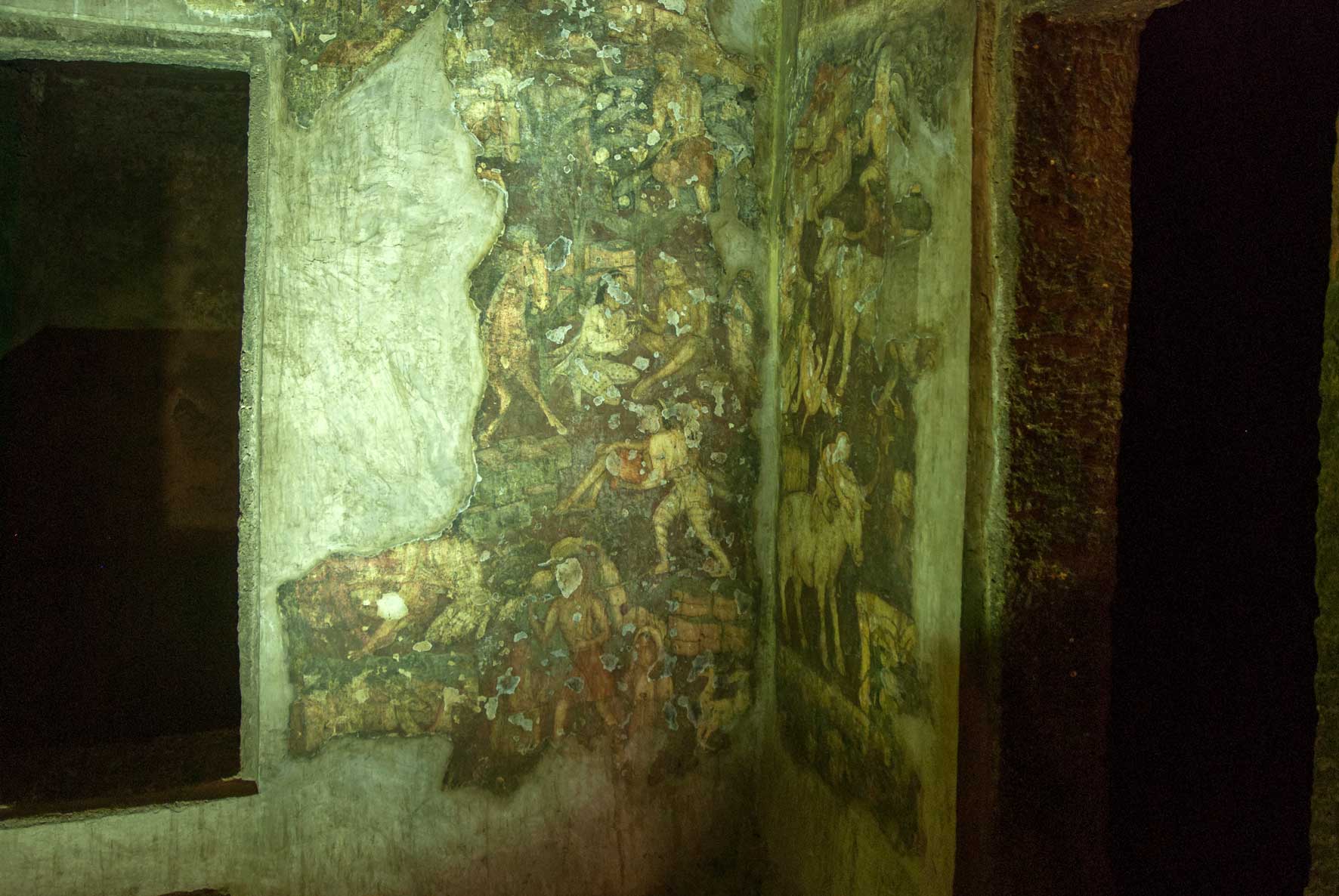
#22. Mahiṣa.
Cave No. 17 Identification: Oldenburg (1895, narrative no. 10).— A yakṣa (genius, a class of semi-divine beings) once observed a monkey tormenting a buffalo by climbing on the back and doing a balancing act on its horns, even covering up its eyes. The yakṣa was amazed at the buffalo’s patience. On inquiry, the buffalo explained…
-
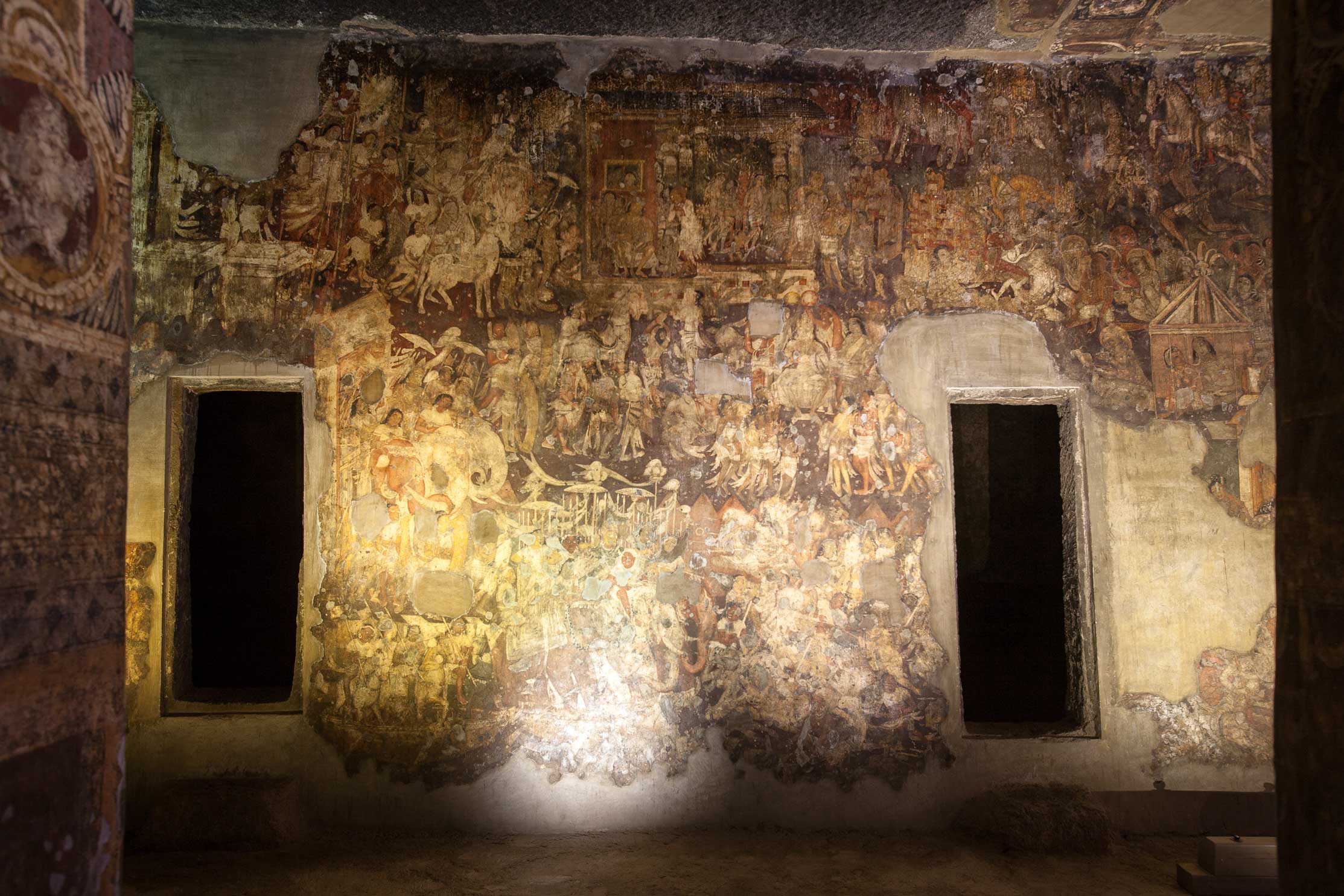
#58. Siṃhala
Cave No. 17 Identification: Foucher (1921, narrative no. 19).— The rich merchant, Siṃhala, went on a voyage along with a group of merchants. They were shipwrecked and found refuge in an island, keeping afloat by various means. Here they were charmed by beautiful women, who married them and kept them happy. The only hitch was…
-

#80. Māravijaya
Ajanta Cave 1. The narrative was identified by Griffiths (Burgess 1879, 14). The legend is from the life of the Buddha.—Indra, disguised as a grass-cutter, offered a bundle of straw to the Bodhisattva who had reached the stage just before the enlightenment. The Buddha first sat in the vajrāsana posture (vajrāsanam abhiruhya or Diamond Seat),…
-
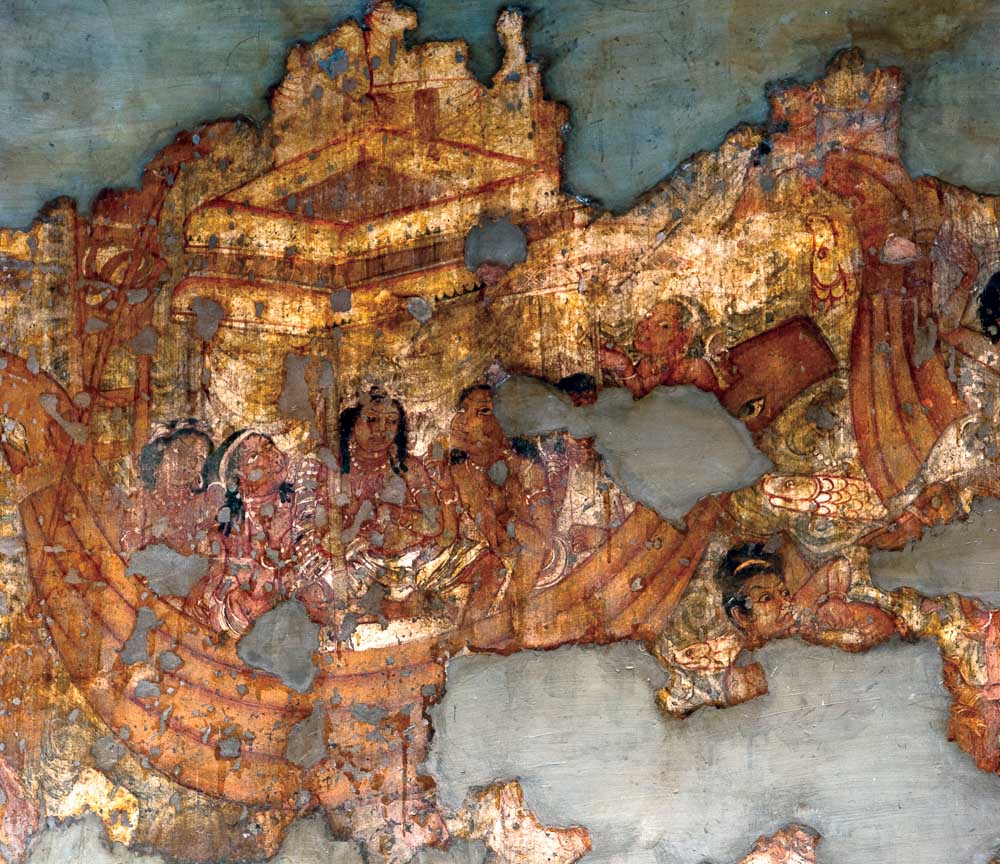
#41. Kalyāṇakārin
Ajanta Cave 1 The narrative was identified by Schlingloff (1976, 5–16). Two princes, Kalyāṇakārin (‘Doing Good’) and Pāpakārin (‘Doing Evil’), bore the characteristics of their names. Once, Kalyāṇakārin, accompanied by Pāpakārin, embarked on a sea voyage in search of wealth as endless charity had emptied out the royal coffers. During their voyage, Kalyāṇakārin found a…
